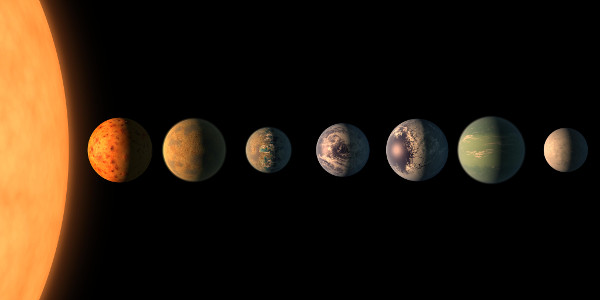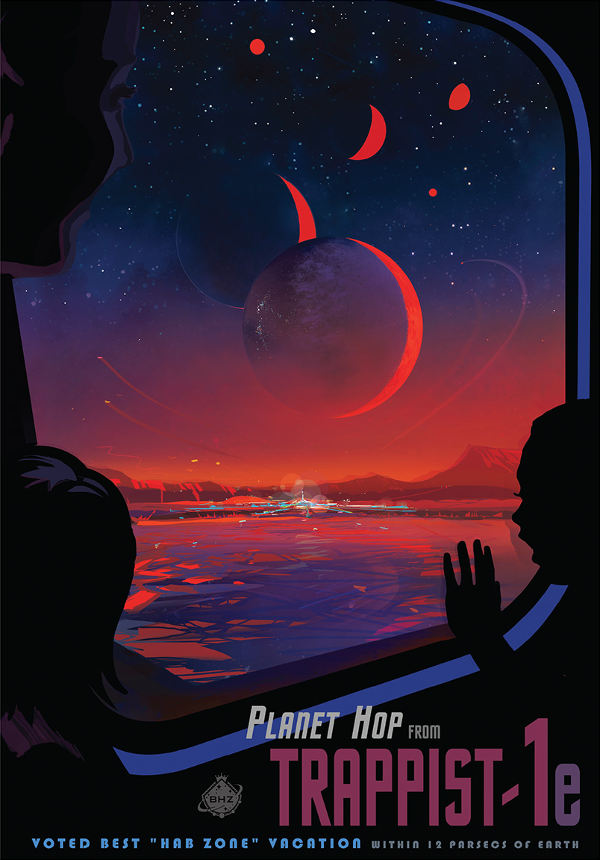Space is big. Really big. You just won't believe how vastly, hugely, mind-bogglingly big it is. I mean, you may think it's a long way down the road to the chemist, but that's just peanuts to space.
 Congratulations to NASA, the recent announcement of the discovery of 7 exoplanets orbiting a relatively close star certainly is exciting.
Congratulations to NASA, the recent announcement of the discovery of 7 exoplanets orbiting a relatively close star certainly is exciting.
But before we get too worked up about seeking out these strange new worlds we have to remember that the "relatively" part of "relatively close" is a difficult concept to encompass when talking about interstellar distances.
TRAPPIST-1Or 2MASS J23062928-0502285 to its friends is 39.5 light years away. It takes light 39.5 years to travel from there to here, anything physical we send back is going to take a lot longer.
Currently the furthest human constructed object is Voyager 1 at 38 light hours awaySee the Where are the Voyagers page for up-to-the-minute information. This is impressive but Voyager 1 has been traveling since 1977.
The differences in scale are hard to internalize so I created a visual aid. In the following diagram the curved line the symbolizes the 39.5ly distance (each lightyear is marked with a blue dash). For comparison, the distance travelled by Voyager 1 is also included.
Diagram showing the relative distances of TRAPPIST-1 and Voyager 1. Click for a larger view. (This image is supposed to be animated but might not work in older browsers or Internet Explorer)
 As you can see, TRAPPIST-1 is quite a way further. Personally I think NASA was premature in including this tourist poster in their press release but on the other hand it is hard not to be excited and even the good people at Nature are publishing short stories set in the newly found solar system.
As you can see, TRAPPIST-1 is quite a way further. Personally I think NASA was premature in including this tourist poster in their press release but on the other hand it is hard not to be excited and even the good people at Nature are publishing short stories set in the newly found solar system.
The good news is that TRAPPIST-1 is close enough that we might be able to directly image the planets themselves instead of inferring their existence. It wasn't long ago that Pluto was just a fuzzy dot on a photographic plate so maybe the coming decades will produce the first colored discs orbiting another star.
If nothing else the TRAPPIST-1 system is weird enough (with 7 probably tide-locked planets all orbiting in close proximity) that science fiction will produce some interesting works.
The exoplanet field is going to continue to make headlines. TESS launches next year and its whole sky images specifically designed to reveal planetary systems are going to take years to pour over. Despite not having the means to travel to other stars, it is somehow comforting to know that our solar system is not that unique. It is an exciting time to be alive.